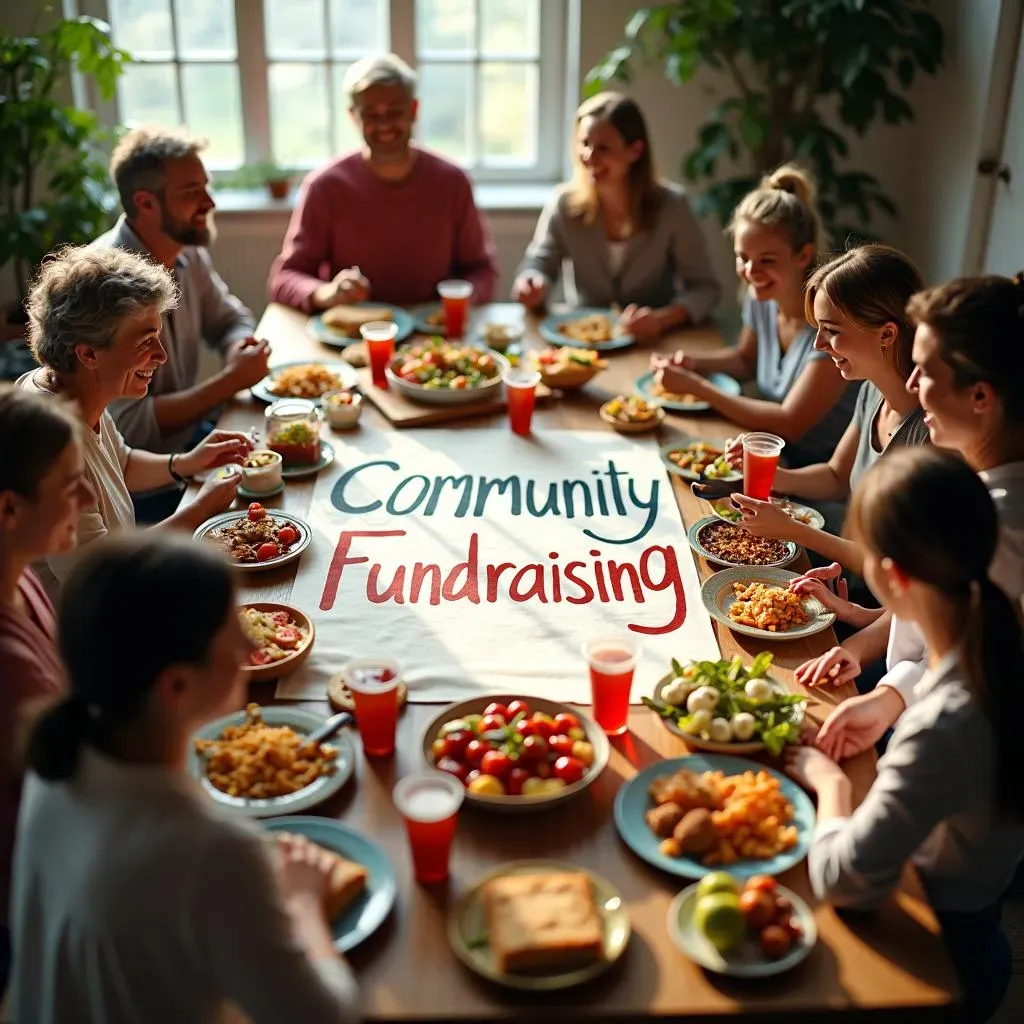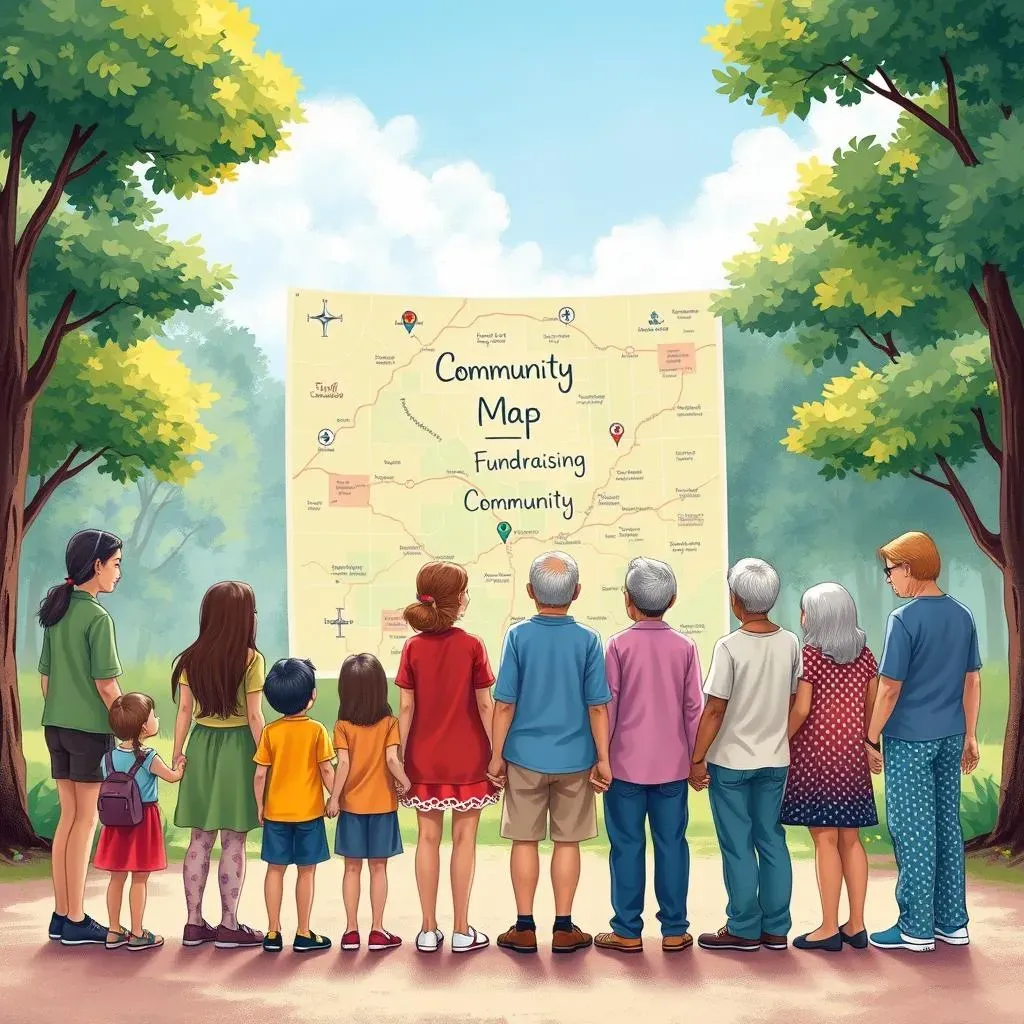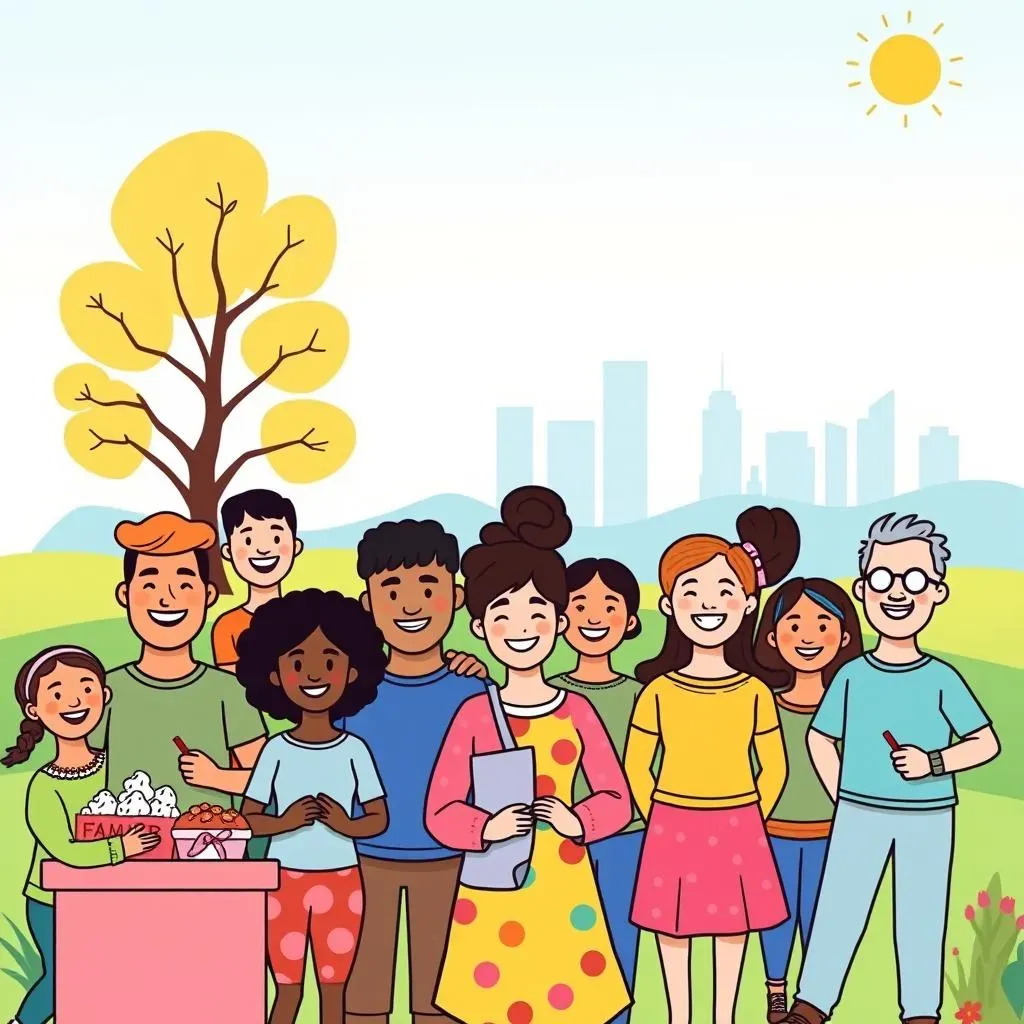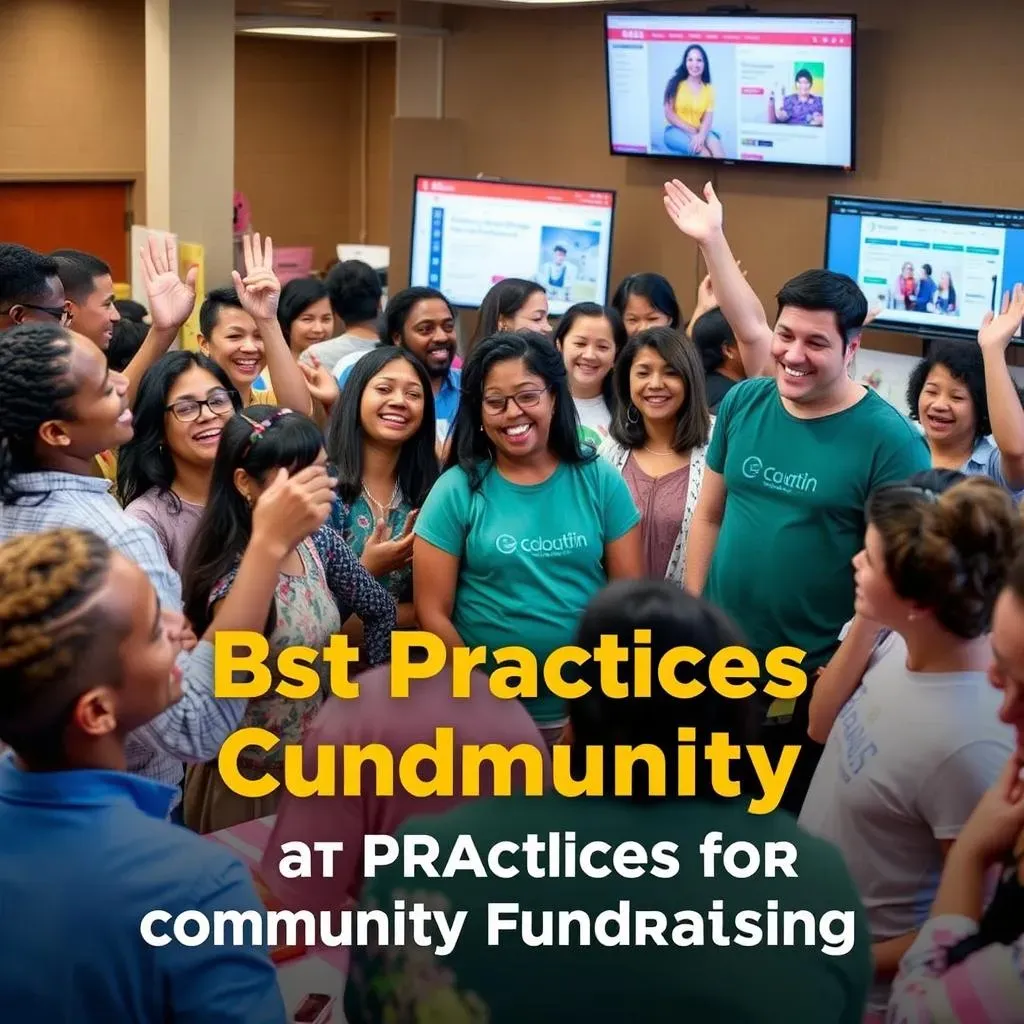Table of Contents
Ever wonder how some charities and non-profits manage to pull off amazing things? It's often not just big donors, but a whole community coming together. That's the magic of community fundraising! It's about getting everyone involved, from your next-door neighbor to the local baker, all pitching in to support a cause they care about. This isn't just about asking for money; it's about building connections and creating a movement. In this guide, we’ll explore the ins and outs of community fundraising, focusing on the best practices that can turn your good intentions into real-world impact. We will look at what makes community fundraising tick, how to plan strategies that actually work, and some cool ideas to get your community buzzing. Plus, we'll cover how to build a top-notch team and ensure you're following the golden rules for success. So, if you're ready to learn how to harness the power of people, keep reading – we're about to get started on your journey to mastering "Community fundraising best practices".
Understanding Community Fundraising

Understanding Community Fundraising
What is Community Fundraising?
So, you're curious about community fundraising? It's really just about people like you and me coming together to support a cause they believe in. Think of it as a group effort, instead of relying on just a few big donations. It’s the kind of fundraising where you see bake sales, sponsored runs, and local events all aimed at raising money for something important. It’s about tapping into the power of your neighborhood, your school, or even your online group to make a difference. It's not about pressure; it's about passion and shared goals.
It's not just about the money, either. Community fundraising is a fantastic way to raise awareness. When you get a bunch of people involved, they start talking about the cause, sharing it with their friends, and suddenly, more people know about it. It’s like planting seeds – the more people you get on board, the more the cause grows. It’s way more than just a transaction; it’s about building a movement and making sure everyone feels like they’re part of something bigger.
Why is it Important?
Why bother with community fundraising when there are other ways to raise money? Well, first off, it's incredibly powerful. When people donate, it’s not just about the cash, it's about the commitment they make. It’s that feeling of "I’m helping with this" that really makes a difference. Plus, it creates a sense of ownership and responsibility in the community. It's like, "Hey, we did this together." That kind of shared effort is way more impactful than just a single donation from a stranger.
Community fundraising also creates a direct link between the cause and the people it serves. Folks see the impact of their contributions firsthand, making it more meaningful and motivating. For example, if you are raising money for a local animal shelter, you might see the actual animals get better care because of the money you raised. That kind of direct impact is incredibly rewarding, and it keeps people coming back to help again and again.
The best way to find yourself is to lose yourself in the service of others. - Mahatma Gandhi
Key Elements of Effective Community Fundraising
So, what makes community fundraising work? It's not just about throwing a party and hoping for the best. It needs to be well-organized, with clear goals and a good plan. Think about what you want to achieve, who you're trying to reach, and what kind of activities will get them excited. A good strategy is like a roadmap; it guides you from point A to point B, and it helps you to avoid getting lost along the way.
Communication is key. You need to tell everyone what you’re doing, why you're doing it, and how they can get involved. Use social media, posters, emails, and good old word-of-mouth. The more people hear about your campaign, the better. And remember, it’s not just about asking for money; it’s about telling a story. Share the impact of your work and why their help matters. When people connect emotionally with your cause, they’re way more likely to donate and get involved.
Key Element | Description |
|---|---|
Clear Goals | Setting specific, measurable, achievable, relevant, and time-bound (SMART) goals. |
Target Audience | Identifying who you’re trying to reach and tailoring your message to them. |
Effective Communication | Using different platforms to share your message and connect with your community. |
Engaging Activities | Planning events and activities that get people excited and involved. |
Community Fundraising Strategies

Community Fundraising Strategies
Planning Your Fundraising Approach
Alright, so you're ready to dive into the nitty-gritty of Community Fundraising Strategies? Awesome! First things first, you can't just throw a dart at a board and hope for the best. You need a solid plan. Think of it like building a house, you wouldn't start with the roof, would you? You begin with a strong foundation. In fundraising, that means setting clear goals. What do you want to achieve? How much money do you need? Who are you trying to reach? The clearer you are, the better your strategy will be. It's like having a map before you embark on a road trip; you're less likely to get lost and more likely to reach your destination. So, start with the goals, and then work backwards to figure out how to get there.
Next, you need to figure out who your target audience is. Are you trying to reach families, young adults, local businesses, or a mix of everyone? Knowing your audience is like knowing your friends; you know what they like, what they don't, and how to get their attention. You need to tailor your message so that it resonates with them. For instance, if you're targeting families, you might want to organize a family-friendly event. But if you're targeting young adults, you might want to leverage social media. It’s all about speaking their language. So, before you start spreading the word, make sure you know who you're talking to.
Analyzing Past Successes and Failures
Okay, so you've got a plan and you know who you're talking to. But before you charge ahead, let's take a moment to look back. What has worked in the past? What hasn't? It's like learning from your mistakes in a video game – you don’t keep making the same wrong moves! Analyzing your past campaigns can give you valuable insights. Maybe last year’s bake sale was a hit, but the sponsored walk flopped. Or maybe you got a ton of donations from social media but not many from emails. Understanding this can help you focus on what works and avoid what doesn't. It’s about being smart and not repeating the same old errors.
And don’t be afraid to look at your failures, either. Sometimes the biggest lessons come from things that went wrong. Did you set unrealistic goals? Did you not communicate well enough? Did you pick an event that didn’t resonate with people? These are all great things to consider. It’s like being a detective; you’re looking for clues that can help you improve for next time. So, take a good look at your past results, both good and bad, and use that knowledge to make your next campaign even better. Remember, every "failure" is just a lesson in disguise.
Aspect | Why it Matters |
|---|---|
Goal Setting | Provides direction and focus for the campaign. |
Target Audience | Allows for targeted and effective communication. |
Past Analysis | Helps you learn from past experiences and refine your approach. |
SWOT Analysis for Community Fundraising
Alright, let's get a bit more strategic. Have you heard of a SWOT analysis? It’s a tool that helps you look at your Strengths, Weaknesses, Opportunities, and Threats. Think of it like a superhero's power assessment. What are you good at? What are you bad at? Where can you improve? What could potentially mess things up? Looking at all these things helps you create a more robust and effective fundraising strategy. For example, your strength might be having a large and engaged group of volunteers, but your weakness might be a lack of marketing expertise. An opportunity could be a local business that's willing to sponsor you, and a threat could be a competing fundraiser happening at the same time. Knowing all this helps you make smart decisions.
By doing a SWOT analysis, you can leverage your strengths, work on your weaknesses, take advantage of opportunities, and prepare for threats. It's like planning for a battle – you wouldn't go in blind, would you? You'd assess the situation, figure out your advantages, and prepare for the challenges. This is what a SWOT analysis does for your fundraising strategy. It helps you be proactive and not reactive. So, before you launch your next campaign, take some time to do a thorough SWOT analysis. It might just be the secret weapon that takes your fundraising to the next level.
Top Community Fundraising Ideas

Top Community Fundraising Ideas
Alright, let's get to the fun part – brainstorming some awesome community fundraising ideas! You know, the kind of stuff that gets people excited to participate and donate. Think beyond just asking for money. We're talking about creating memorable experiences that people will actually enjoy. From coffee mornings to sponsored events, the options are endless. The key is to pick something that fits your cause, your community, and your resources. It's like planning a party; you want to choose activities that everyone will love, not just you. So, let's explore some ideas that can help you make a real difference while also having a blast!
First up, let's talk about the classics that still work like a charm. Things like bake sales, car washes, and raffles are tried and true for a reason. They're easy to organize, they don't require a huge budget, and everyone loves a good treat or a chance to win a prize. For example, a bake sale is always a hit, who can resist a homemade cookie or cupcake? And a car wash is a practical way for people to help while also getting their car cleaned. These types of events are like comfort food; they’re familiar and always satisfying. They're a great way to start and can be a lot of fun for everyone involved.
- Bake Sales: Classic and always popular.
- Car Washes: Practical and easy to organize.
- Raffles: A chance to win prizes always draws a crowd.
But let's not stop there! There are tons of other great ideas that can bring a fresh twist to your fundraising efforts. How about a sponsored walk, run, or bike ride? It’s a great way to get people active while raising money for a good cause. Or you could organize a themed trivia night – who doesn't love a bit of friendly competition? Online crowdfunding campaigns are also super effective, especially when you share a compelling story and make it easy for people to donate. The possibilities are endless, and it's all about finding what resonates with your community. It's like being an artist; you're mixing different elements to create something unique and impactful.
Don't forget about the power of community events! Think about hosting a local concert, a craft fair, or a talent show. These events bring people together and create a sense of belonging. For example, a talent show can be a fun way to showcase local talent and get everyone involved. Or a craft fair can be a great place for local artists to sell their work while also raising funds for your cause. It's like building a community hub; you're creating a space where people can connect, have fun, and support a good cause all at the same time. So, get creative and think about how you can make your fundraising events fun and engaging.
Fundraising Idea | Description |
|---|---|
Sponsored Walks/Runs | Get people active while raising money. |
Themed Trivia Nights | Fun and competitive events. |
Online Crowdfunding | Reach a wider audience with online campaigns. |
Community Events | Bring people together with concerts or fairs. |
Building a Successful Community Fundraising Team

Building a Successful Community Fundraising Team
Okay, so you’ve got all these great ideas for community fundraising, but here’s the thing: you can’t do it all alone! You need a solid team, a group of people who are just as passionate as you are about making a difference. Think of it like assembling a superhero squad. Each person brings their own unique skills and talents to the table. It's not just about having a lot of people; it's about having the right people in the right roles. And let's be honest, a good team can make the whole process way more fun and way less stressful. So, let's dive into what makes a community fundraising team truly shine.
First off, every great team needs a leader, someone who can keep everyone on track and motivated. This person doesn't have to be bossy, but they should be organized, good at communicating, and able to make decisions when needed. Think of them as the captain of a ship; they steer the course and make sure everyone is working together towards the same destination. Then, you'll need someone who is dedicated to managing the actual fundraising efforts. This person will be in charge of planning events, managing donations, and keeping track of progress. They're the ones who make sure the money comes in. And of course, you can't forget about marketing. You need someone who can spread the word and get people excited about your cause. This person knows how to create engaging content, use social media effectively, and reach a wide audience. It's like having a megaphone; they make sure everyone hears about what you're doing.
Role | Responsibilities |
|---|---|
Team Leader | Organizing and motivating the team, making key decisions. |
Fundraising Manager | Planning events, managing donations, tracking progress. |
Marketer | Creating engaging content, using social media, reaching the audience. |
But it's not just about having specific roles; it's also about creating a positive and collaborative atmosphere. You want people to feel valued and appreciated. When people feel like they're part of something bigger, they're more likely to stick around and work hard. Think of it like a family; you support each other, celebrate successes together, and learn from each other's mistakes. And let's be real, a bit of fun goes a long way. Throw some team-building activities in the mix, celebrate milestones, and make sure everyone knows their efforts are making a real difference. It’s about creating a positive environment where everyone feels like they're contributing to something awesome. Remember, a happy team is a productive team.
And finally, don't forget to recognize and appreciate your team. A simple thank you can go a long way. Celebrate small wins, highlight individual contributions, and make sure everyone knows that they are making a real impact. It’s like giving high-fives after a great workout. It’s a small gesture that makes everyone feel good and keeps them motivated. So, build a team that’s not only effective but also feels like a family. It’s the kind of team that will not only achieve its fundraising goals but also have a blast doing it. After all, who wants to be part of a boring team? A great team is the backbone of any successful community fundraising effort, and it’s worth investing time and effort in building one.
Alone we can do so little; together we can do so much. - Helen Keller
Best Practices for Community Fundraising

Best Practices for Community Fundraising
Make it Accessible
Alright, let's talk about making your fundraising efforts something everyone can get involved in. It's not just about reaching the most people, it's about making sure everyone *can* participate. Think about it: if your event is only accessible to a certain group of people, you're missing out on a whole lot of potential support. It's like throwing a party but only inviting half your friends; the other half might feel left out. So, how do you make your fundraising more inclusive? Well, start by thinking about things like location, timing, and the types of activities you're planning. If you're hosting an event, make sure it's somewhere easy to get to, with options for public transportation and parking. And if it’s online, ensure it's accessible on different devices and for people with disabilities. It’s about removing barriers and making it easy for anyone who wants to help to do so.
Also, consider the cost of your activities. Not everyone can afford to spend a lot of money to participate. So, offer different options, like free or low-cost activities, or different donation levels. And don't forget about the people who can't participate in physical activities. Maybe you can offer alternative ways to get involved, like volunteering or helping with online promotion. The goal is to create opportunities for everyone to contribute, no matter their situation. It's like building a playground, you want to make sure there are different kinds of equipment so everyone can play. The more inclusive you are, the more successful your fundraising will be. Remember, it's not just about the money; it's about building a community of support.
Accessibility Consideration | Example |
|---|---|
Location | Choose a venue with good public transport and parking. |
Timing | Consider work schedules and other commitments. |
Cost | Offer free or low-cost options. |
Physical Activity | Provide alternative ways to participate for those with limited mobility. |
Choose the Right Tools
Now, let's talk about tools. You wouldn't try to build a house with just a hammer, would you? You need the right tools for the job. The same goes for community fundraising. There are tons of resources out there that can make your life easier and your fundraising more effective. Think about things like online donation platforms, social media management tools, and email marketing software. These tools can help you reach more people, track your progress, and manage your campaign more efficiently. It's like having a super helpful assistant; they handle the tedious tasks so you can focus on the big picture. So, don't be afraid to explore different options and find the ones that work best for your needs. The right tools can make all the difference in the world.
And let's not forget about good old-fashioned communication. Word of mouth is still incredibly powerful, but you need to make sure you're using the right channels to get your message out. That means using social media effectively, creating engaging email campaigns, and posting flyers in your local community. And remember, it's not just about blasting out your message; it's about connecting with people on a personal level. Share stories, show the impact of your work, and make people feel like they're part of something important. It's like building relationships; you need to nurture them and keep them engaged. So, choose the tools that work best for you and use them wisely. It's the combination of the right tools and the right approach that will make your community fundraising a success.
The best tool is the one that gets the job done. - Unknown
